Models of Electrocortical Activity: Cerebral Rhythms,
Synchronous Oscillation, and Relations to Cortical Stability
Agora 1999
Abstract
A family of related models of electrocortical activity
provide explanations of the origin of the cerebral rhythms,
synchronous oscillation, and the emergence of spontaneous
cortical activity. State-equations shown to reproduce generic
properties of electrocortical activity are parametrised
from physiological data, and modified to include realistic
anatomical features. In these models, the occurrence of
resonant phenomena in the delta, theta, alpha, beta, and
gamma bands, depends upon strong and rapid negative
feedback, particularly at inhibitory synapses. This
feedback is only partially accounted for by membrane
reversal potentials. Travelling wave activity is associated
with highly damped solutions of the system's dispersion
relations, and thus global resonant modes play little
part. However, the formulation is compatible with an
origin of alpha activity from thalamo-cortical resonance.
With progressive increases in cortical activation, the
power spectrum of electrocortical activity exhibits
dominance of activity at progressively higher frequencies.
At lower levels of cortical activation, associated with
the theta, alpha, and beta bands, the simulated cortical
system exhibits a single stable fixed point. Activity in
the gamma band around 40 Hz, associated with large amplitude
oscillations of pulse density, appears at higher levels
of cortical activation, and is associated with an unstable
fixed point. The transition between stable and unstable
fixed points appears analogous to a thermodynamic phase
transition, and features of fast and slow neurotransmission
can be incorporated, to render the system stable in the
large. Synchronous oscillation appears between co-active
cortical sites, and does not depend upon non-linear phase
locking, except at high degrees of cortical activation.
Instead, synchrony is explained by analysis of the odd
and even eigenfunctions of wave motion radiating from
each of the co-active sites. The most complex application
of this model attempts representation of electrocortical
activity at the mini-columnar scale, by introducing a
detailed specification of the inhibitory surrounds and
patchy intrinsic connectivity of visual cortex. Quantitative
specifications were obtained from a learning-rule model
for visual cortical development. By this means, it is
hoped to explore relations between rapid brain dynamics
and synaptic plasticity of the Hebbian type. Testable
predictions of this class of models included specific
relations between 40 Hz and gamma band activity, and the
slow electrocortical potentials.
Slide 1, Lecture Title and Authors

Slide 2, Aim/Principles
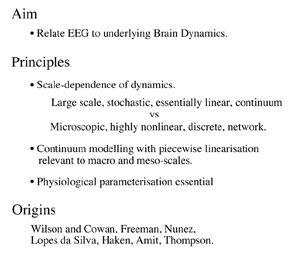
Slide 3, Mathematical Basis of Model
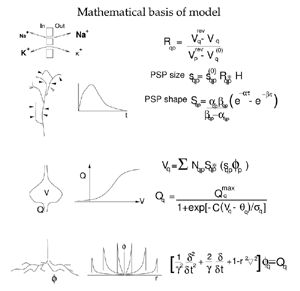
Slide 4, "Exploded" levels of brain modelling
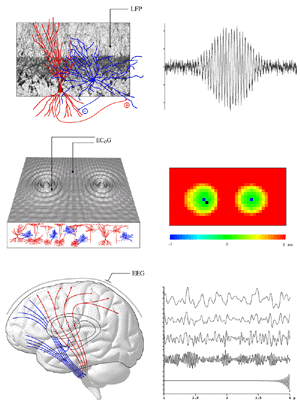
Slide 5, List of parameter values and dimensions
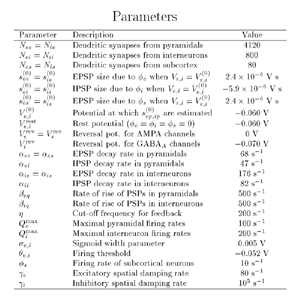
Slide 6, Fixed points, linearisation, power spectrum and dispersion relation calculations
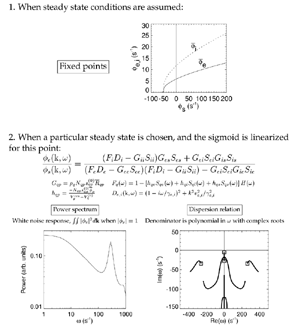
Slide 7, Fit to EEG

Slide 8, Cortico-thalamic model, fit to spectra and model root-locus diagram
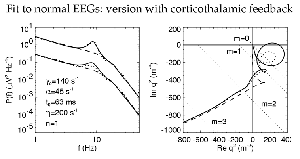
Slide 9, Model with local feedback, dispersion relations
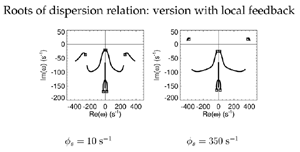
Slide 10, Table of real synaptic feedback mechanisms
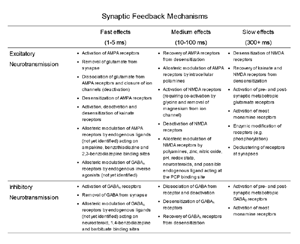
Slide 11, Boiling porridge
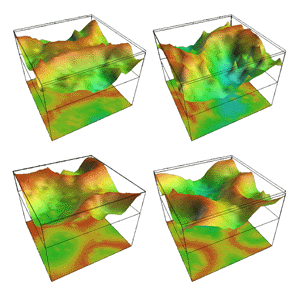
Slide 12, Spectra from CCF
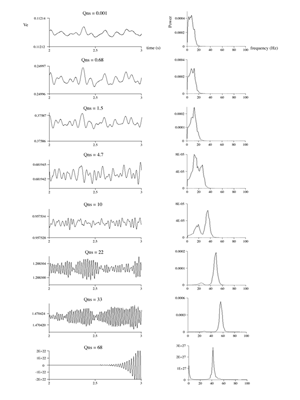
Slide 13, Two input ccf, cross-correlations and lag, first and
second eigenfunctions, odd and even input diagrams
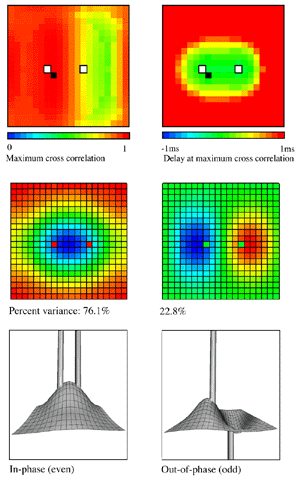
Slide 14, Moving bar simulations of spectra and cross-correlations
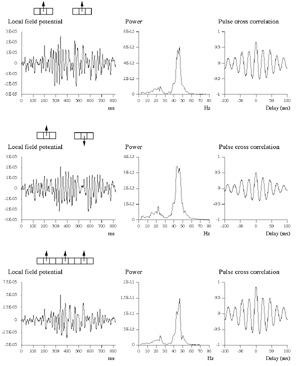
Slide 15, Zero-lag synchrony and spectra at increasing Q_ns
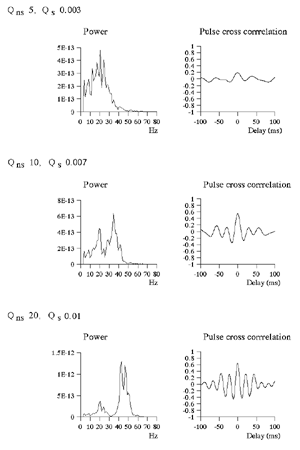
Slide 16, Patchy connectivity with orientation preference
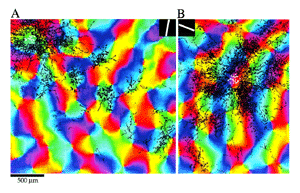
Slide 17, Real orientation preference in shrew visual cortex with
types of orientation preference junctional continuity
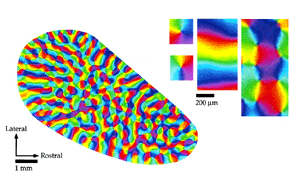
Slide 18, Simulation results of visual cortex orientation preference
with types of junctional continuity
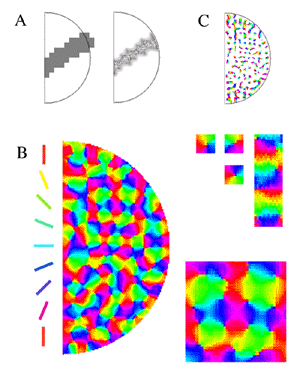
Slide 19, "Exploded" levels of brain modelling
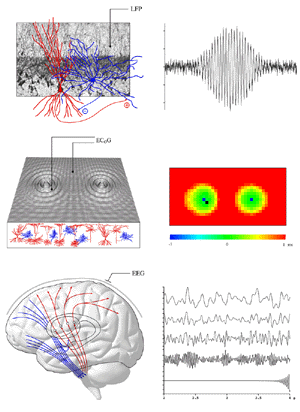
Slide 20, Next Steps

|